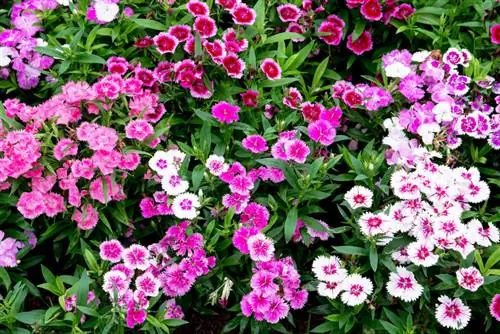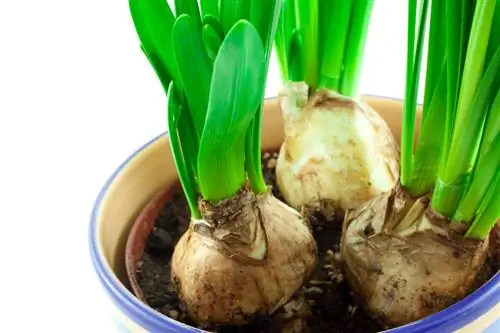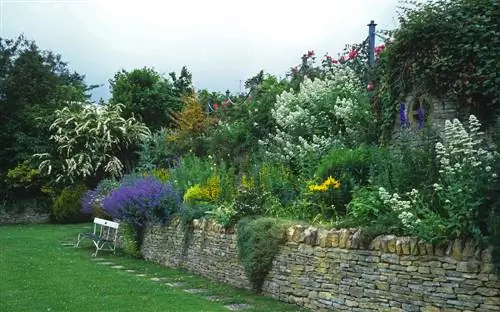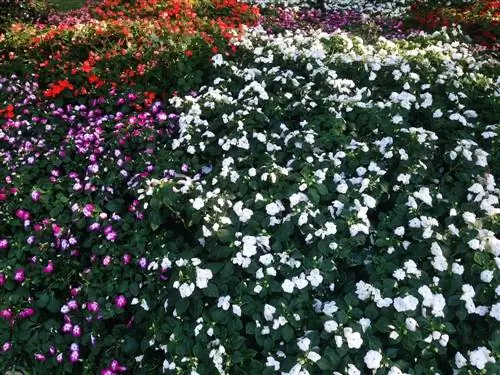- Author admin [email protected].
- Public 2023-12-16 16:46.
- Last modified 2025-01-23 11:20.
While the bearded carnation is a biennial summer flower (in the first year it only develops leaves, in the second year it flowers), the carnation is perennial. Since it does not always survive a cold, wet winter, it is often sold as an annual summer flower.

Are carnations perennial plants?
Carnations (Dianthus caryophyllus) are perennial plants, but they often do not survive cold, wet winters well. For this reason they are often offered as annual summer flowers. However, with proper winter protection, they can remain in the garden for longer.
In different colors and blooming over many weeks, the carnation is an ornament for every garden, be it a classic cottage garden or an artfully landscaped rock garden. It also looks very good in the hanging version in the balcony box. The predominant flower colors are red and pink. But there are also two-tone or yellow carnations.
Where does the carnation feel comfortable?
In order for your carnation to bloom reliably every summer, it requires a minimum of care, such as calcareous soil and sufficient water and light. Plant the carnation in as sunny a place as possible, slightly protected from cold wind.
This is how your carnation survives the winter
The carnation can overwinter well outside in the bed. Just give it a little protection from frost and rain with a layer of brushwood. Wrap balcony boxes in an old blanket and then place them in a dry place protected from the wind or in an unheated greenhouse. On frost-free sunny days, water your carnation a little so that it doesn't die of thirst. This applies to bed carnations as well as balcony or pot plants.
The lifespan of Dianthus caryophyllus (Carnation):
- actually perennial
- However, does not tolerate cold, wet winters
- may need winter protection
- is often offered as an annual summer flower
Tip
Plant the carnation in a sunny spot in your garden with lime-rich, loose soil and ensure there is sufficient moisture without waterlogging. Then this plant will stay with you for many years.






